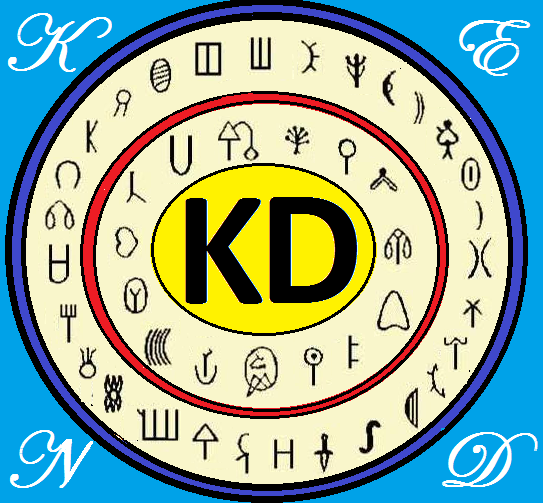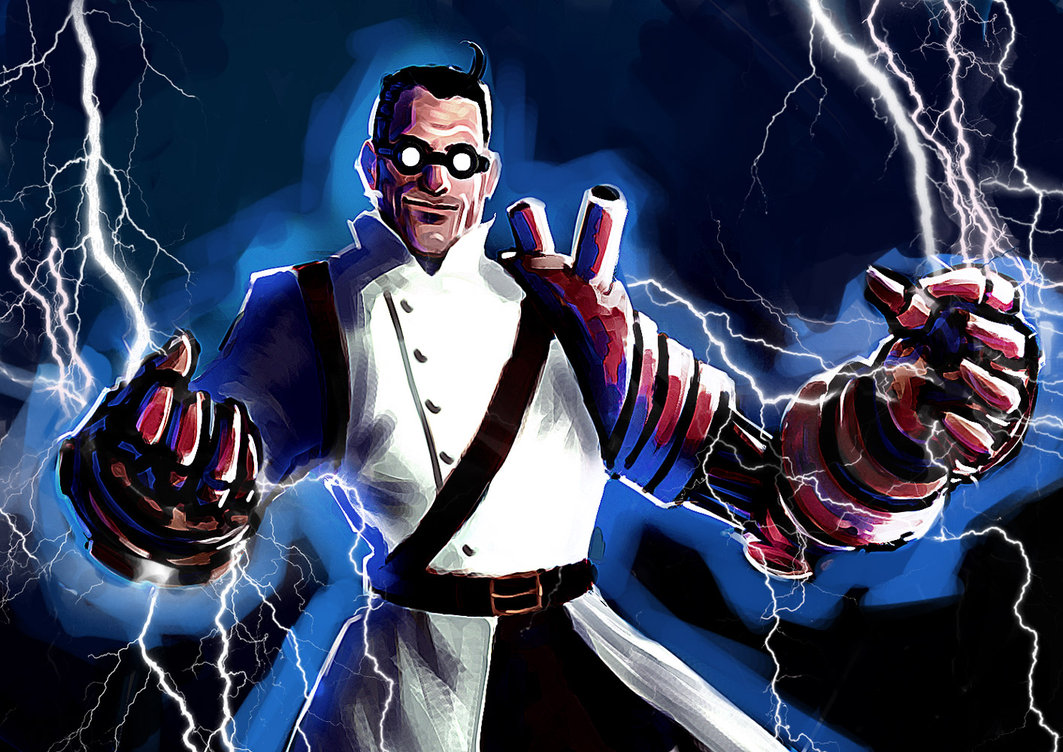Supernatural: Niraya/Hell
Geography
- Arbuda- a dark, frozen plain surrounded by icy mountains and continually swept by blizzards. Inhabitants of this section arise fully grown and abide lifelong naked and alone, while the cold raises blisters upon their bodies. The length of life in this section is said to be the time it would take to empty a barrel of sesame seeds if one only took out a single seed every hundred years. Torture in this section is 21,012 years long. Nirarbuda- even colder than Arbuda. There, the blisters burst open, leaving the beings' bodies covered with frozen blood and pus. Torture in this section is 41,013 years long. Aṭaṭa- beings shiver in the cold, making a painful "aṭ-aṭ-aṭ" sound with their mouths. Torture in this is 81,014 years long. Hahava- beings lament in the cold, going "haa, haa" in pain. Torture in this section is 1,061,016 years long. Huhuva- beings shiver as their teeth chatter, making the sound "hu, hu." Torture in this section is 3,021,017 years long. Utpala- the intense cold there makes the skin turn blue like the color of a waterlily. Torture in this section is 6,041,018 years long. Padma- has blizzards that crack open frozen skin, leaving one raw and bloody. Torture in this section is 10,281,020 years long. Mahāpadma- the entire body cracks into pieces and the internal organs are exposed to the cold, also cracking. Torture in this section is 20,561,021 years long. Sañjīva- has ground made of hot iron heated by an immense fire. Beings in this section appear fully grown, already in a state of fear and misery. As soon as the being begins to fear being harmed by others, their fellows appear and attack each other with iron claws and hell guards appear and attack the being with fiery weapons. As soon as the being experiences unconsciousness like death, they are suddenly restored to full health and the attacks begin again. Other tortures experienced in this section include: having molten metal dropped upon them, being sliced into pieces, and suffering from the heat of the iron ground. Torture in this section is 1.62×1012 years long. Kālasūtra- includes the torments of Sañjīva. In addition, black lines are drawn upon the body, which hell guards use as guides to cut the beings with fiery saws and sharp axes. Torture in this section is 1.296×1013 years long. Saṃghāta- surrounded by huge masses of rock that smash together and crush the beings to a bloody jelly. When the rocks move apart again, life is restored to the being and the process starts again. Torture in this section is 1.0368×1014 years long. Raurava- beings run wildly about, looking for refuge from the burning ground. When they find an apparent shelter, they are locked inside it as it blazes around them, while they scream inside. Torture in this section is 8.2944×1014 years long. Mahāraurava- similar to Raurava. Punishment here is for people who maintain their own body by hurting others. In this section, animals torment them and eat their flesh. Torture in this section is 6.63552×1015 years long. Tapana- where hell guards impale beings on a fiery spear until flames issue from their noses and mouths. Torture in this section is 5.308416×1016 years long. Pratāpana- tortures here are similar to the Tapana, but the beings are pierced more bloodily with a trident. Torture in this section is 4.2467328×1017 years long. Avīīchii- beings are roasted in an immense blazing oven with terrible suffering. Torture in this section is 3.39738624×1018 years long.
- In the First-Ring of the Seventh-Circle, the murderers, war-makers, plunderers, and tyrants are immersed in Phlegethon, a river of boiling blood and fire. As they wallow in blood during their lives, so they are immersed in the boiling blood forever, each according to the degree of his guilt. The Second-Ring of the Seventh-Circle is the Wood-of-the-Suicides, in which the souls of the people who attempted or committed suicide are transformed into gnarled, thorny trees and then bitten by hideous clawed birds with the faces of women; the trees are only permitted to speak when broken and bleeding. Suicide is an insult to the body; so here the shades are deprived of even the semblance of the human form. As they refused life, they remain fixed in a dead and withered sterility. They are the image of the self-hatred which dries up the very sap of energy and makes all life infertile. These suicides, unique among the dead, will not be resurrected after the Final-Judgement since they threw their bodies away; instead, will maintain their bushy form with their own corpses hanging from the thorny limbs. Throughout the forest race multiple Profligates, those who when possessed by a depraved passion all dissipated their goods for the sheer longing of wreckage and disorder, these Profligates are chased and savagely mauled by ferocious hounds. The destruction brought onto the wood by the profligates' flight and punishment as they crash through the undergrowth causes further suffering to the Suicides, who cannot move out of the way as they are wooden. The Third-Ring of the Seventh-Circle is the great Plain-of-Burning-Sand scorched by great flakes of flame falling slowly down from the sky. The Blasphemers (the Violent against divinity) are stretched flat upon the burning sand, the Heathens (the Violent against nature) run in circles, while the Usurers (the Violent against Art itself, which is the grandchild of the Creator) crouch huddled and weeping. The overflow of Phlegethon, the river of blood from the First-Ring, flows boiling through the Wood of the Suicides (the Second-Ring) and crosses the Burning-Plain. Just past this is the waterfall that plunges over the Great-Cliff into the Eighth-Circle, to pass safely through the filthy air of the abyss once must fly down from the cliff on the back of the Monster-of-Fraud.
- Bolgia-One is filled with Panderers and seducers: These sinners make two files, one along either bank of the ditch and march quickly in opposite directions while being whipped by horned demons for eternity. They deliberately exploited the passions of others and so drove them to serve their own interests, and are now themselves driven and scourged. Bolgia-Two is filled with Flatterers: these also exploited other people, this time abusing and corrupting language to play upon others' desires and fears. They are steeped in excrement (representative of the false flattering they told on earth) as they howl and fight among themselves. Bolgia-Three is filled with Simoniacs: those who committed simony, the sale of ecclesiastic favors and offices and therefore made money for themselves out of what belongs to their respective church. The sinners are placed head-downwards in round, tube-like holes within the rock (debased mockeries of baptismal fonts), with flames burning the soles of their feet. The heat of the fire is proportioned to their guilt. Bolgia-Four is filled with fortune tellers, diviners, astrologers and other false prophets. The punishment of those who attempted to usurp Creation’s privilege by prying into the future, is to have their heads twisted around on their bodies; in this horrible contortion of the human form, these sinners are compelled to walk backwards for eternity, blinded by their own tears. Those who sought to penetrate the future now cannot even see in front of themselves; they attempted to move themselves forward in time, so must they go backwards through all eternity; and as the arts of sorcery are a distortion of Creation’s law, so are their bodies distorted in Hell. Bolgia-Five is filled with Barraters: Corrupt politicians who made money by trafficking in public offices (the political analogue of the Simoniacs), are immersed in a lake of boiling tar, which represents the sticky fingers and dark secrets of their corrupt deals. They are guarded by demons called the Malebranche (Evil-Claws), who tear them to pieces with claws and grappling hooks if they catch them above the surface of the pitch. The leader of the Malebranche, named Malacoda ("Evil Tail") throws the Barraters into the pitch where the demons set upon them. Bolgia-Six is full of Hypocrites: the hypocrites listlessly walking around a narrow track for eternity, weighted down by leaden robes. The robes are brilliantly gilded on the outside and are shaped like a monk's habit, the hypocrite's outward appearance shines brightly and passes for holiness, but under that show lays the terrible weight of deceit, a falsity that weighs them down and makes spiritual progress impossible for them. Bolgia-Seven is full of Thieves: a pit filled with monstrous reptiles, snakes and lizards pursue and bite the thieves, curl themselves about the sinners and bind their hands behind their backs. Bolgia-Eight is full of Counsellors of Fraud: fraudulent advisers or evil counsellors move about, hidden from view inside individual flames. These are not people who gave false advice, but people who used their position to advise others to engage in fraud. Bolgia-Nine is filled with Sowers of Discord: the Sowers of Discord are hacked and mutilated for all eternity by a large demon wielding a bloody sword; their bodies are divided as, in life, their sin was to tear apart what was intended to be united; these are the sinners who are ready to rip up the whole fabric of society to gratify a sectional egotism. The souls must drag their ruined bodies around the ditch, their wounds healing in the course of the circuit, only to have the demon tear them apart anew. There are divided into three categories: religious schism and discord, civil strife and political discord and family disunion or discord between kinsmen. Bolgia-Ten is filled with Falsifiers: a disease on society, they are themselves afflicted with different types of afflictions: horrible diseases, stench, thirst, filth, darkness, and screaming. Some lie prostrate while others run hungering through the pit, tearing others to pieces, viciously scrubbing and clawing at their leprous scabs.
- Round-One of the Lake is Caïna: this Round houses the Traitors to their Kindred; they have their necks and heads out of the ice and are allowed to bow their heads, allowing some protection from the freezing wind. Round-Two of the Lake is Antenora: here lie the Traitors to their Country: those who committed treason against political entities (parties, cities, or countries) have their heads above the ice, but they cannot bend their necks. Round-Three is Ptolomaea: Traitors to their Guests lie supine in the ice while their tears freeze in their eye sockets, sealing them with small visors of crystal: even the comfort of weeping is denied them. Round-Four is Judecca: contains the Traitors to their Lords and benefactors. Judecca is completely silent: all of the sinners are fully encapsulated in ice, distorted and twisted in every conceivable position. The sinners present an image of utter immobility.
Fauna & Flora
Natural Resources
Remove these ads. Join the Worldbuilders Guild












The rivers stykes and let are not given meanings in parenthesis like the other three? Why so, just out of curiosity? I think you have it well put together and use enough lore that is unique with lore established in Abrahamic religions to make a familiar rendition of hell without it being derivative at all. I see a lot of Dante's Inferno here, which while many people use it, you seem to use it as an inspiration rather than a framework. You add a lot of little things and make many changes to the circles that make it truly your own, even further dividing them and giving unique punishments and the reasons for them as well which is good to have. Ialso like that you explain why souls won't die in hell and that leads to my main question: what keeps souls from getting used to the torment. Punishment can often times develop callouses in the mind as well. While the body restores itself, does the mind as well? What stops the souls from developing masochistic tendencies and enjoying it rather than suffering, how do they stay same enough to realize the horror of their torment? Aside from that its pretty well rounded and covers all your bases. I also like how at the end you seem to give reasons for all different types of demons not just the standard ones. The Oni seem to be an inspiration too. Also last sentence it should be are not is I believe. Good work :)
In response to your question of why souls don't become immune to torment, the answer is simple; because Hell, unlike the physical realms, has laws of its own. For example, in Hell you can't die, you can't eat (without suffering), you can barely breathe, and you can't sleep (at least not for long). Hell is the playground of the demons. It's laws function differently. Gravity is twice as strong as on earth, time has a habit of flowing backwards and punishments seem to get more and more difficult as time (if functioning at all) passes. Sinners can't develop an immunity to pain because every time they are killed they are simply "reset", brought back to life for the process to restart all over again. They are trapped in their own time-bubbles, their own time-periods, and so they never develop immunity to the torture as they are reborn every time they are killed. The body restores itself, but the mind cannot. The demons seek only one objective; to break your spirit and mind. They force you into extremes in order to shatter your courage, self-respect, determination and so on. And once they break your spirit, they can do as they please. They make you into a toy for their pleasure, and will abuse you until you are nothing more than a lifeless husk of who you once were. It's a rather horrible process, and it's no wonder no people enjoy it. You can't develop a pleasure for pain, especially extreme levels of it. Imagine you're trapped in a black box; from one side you are massaged gently and from the other you are stabbed mercilessly. After years of this your mind will no longer differentiate from pleasure and pain and will go into a sensory-overload. You could say this is what it feels like in Hell, one overextending sensory-overload. But much worse, since you can never escape it. And, combined with the rebirths, it's no wonder most people in Hell go mad easily.
Ahhh well, that makes more sense. Lot of depth there as well. Not a place to visit for vacation that's for sure. Thanks for the clarification. :)
No problem. :)